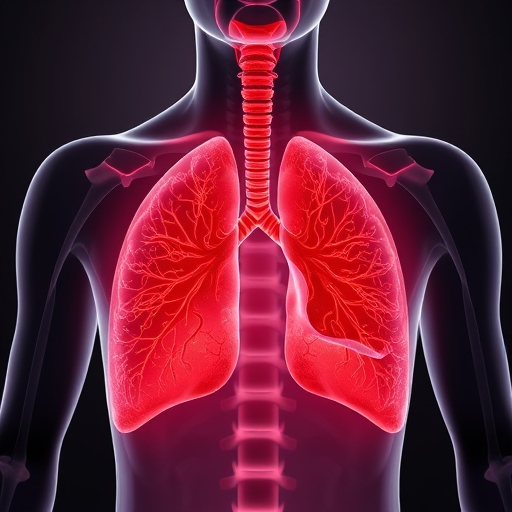Chronic Lower Respiratory Disease (CLRD) refers to a group of chronic conditions that cause airflow obstruction and breathing difficulties. These diseases share common symptoms but may vary in terms of their underlying causes and specific treatments. The condition is primarily characterized by inflammation and narrowing of the airways, which results in reduced airflow and impaired gas exchange.
Common Conditions Associated with CLRD:
- Chronic Obstructive Pulmonary Disease (COPD): A progressive disease that leads to breathing difficulties and includes conditions like chronic bronchitis and emphysema. COPD is primarily caused by long-term exposure to irritants such as tobacco smoke and air pollution.
- Chronic Bronchitis: This condition is marked by inflammation of the bronchial tubes, resulting in a persistent cough and excess mucus production. It is most commonly caused by smoking but can also result from prolonged exposure to irritants.
- Emphysema: A disorder in which the alveoli (air sacs) in the lungs are damaged, making it difficult to breathe and reducing oxygen intake. Emphysema is often associated with COPD and is typically caused by smoking or long-term exposure to environmental pollutants.
Causes and Risk Factors
Understanding the causes and risk factors associated with CLRD can help individuals take preventive steps to maintain their lung health. Common causes and risk factors include:
1. Smoking
Cigarette smoking is the leading cause of CLRD. Both active smoking and exposure to secondhand smoke significantly increase the risk of developing chronic respiratory diseases.
2. Air Pollution
Long-term exposure to air pollutants—including industrial emissions, vehicle exhaust, and indoor pollutants like cooking smoke and chemical fumes—can contribute to the development of respiratory diseases.
3. Genetic Factors
A family history of respiratory diseases may increase the likelihood of developing CLRD, as certain genetic factors can predispose individuals to lung issues.
4. Occupational Exposure
Workers in specific industries may be exposed to harmful substances like dust, fumes, and chemicals, which can lead to respiratory problems over time.
5. Previous Respiratory Infections
Severe respiratory infections, especially those contracted during childhood, can increase the risk of developing chronic lung diseases later in life.
Symptoms of Chronic Lower Respiratory Disease
Recognizing the symptoms of CLRD is vital for early intervention and effective management. Common symptoms include:
- Chronic Cough: A persistent cough that lasts for weeks or months.
- Shortness of Breath: Difficulty breathing during physical activity and, in severe cases, even at rest.
- Excess Mucus Production: Increased mucus or phlegm that leads to coughing fits.
- Wheezing: A whistling or squeaky sound when breathing, often indicating narrowed airways.
- Fatigue: Reduced energy levels due to breathing difficulties.
Management and Treatment
While CLRD is a chronic condition, effective management can significantly improve quality of life and slow disease progression. Here are key strategies for managing CLRD:
1. Quitting Smoking
If you smoke, quitting is the most important step you can take to improve your lung health. Smoking cessation programs, counseling, and medications can provide the support you need.
2. Medications
Inhalers, bronchodilators, and corticosteroids are commonly prescribed to reduce inflammation, improve airflow, and manage symptoms. Working closely with your healthcare provider will ensure the right medications for your specific condition.
3. Pulmonary Rehabilitation
Joining a pulmonary rehabilitation program can help improve breathing techniques, increase physical fitness, and provide education on managing your condition.
4. Avoiding Triggers
Identify and minimize exposure to environmental allergens, pollutants, and irritants like dust, smoke, and strong odors.
5. Healthy Lifestyle Choices
Maintaining a balanced diet, staying physically active (as tolerated), and staying hydrated can help reduce strain on the respiratory system. Maintaining a healthy weight also benefits lung function.
6. Regular Check-ups
Regular check-ups with your healthcare provider are essential to monitor the progression of your condition and adjust treatment as necessary. Early intervention can prevent exacerbations and hospitalizations.
Conclusion
Chronic Lower Respiratory Disease affects millions of individuals worldwide, but by understanding its causes, symptoms, and management options, you can take proactive steps to improve your respiratory health. By quitting smoking, adopting a healthy lifestyle, and staying informed about effective management strategies, you can improve your quality of life and breathe easier. If you suspect you have CLRD or are experiencing symptoms, don’t hesitate to consult your healthcare provider for proper diagnosis and treatment. Your lungs deserve the best care possible!
